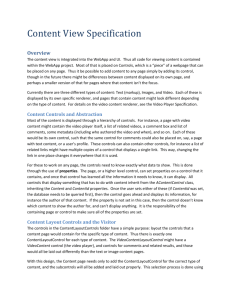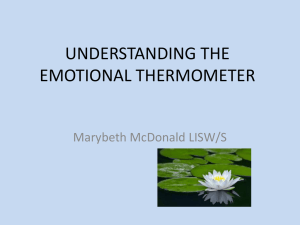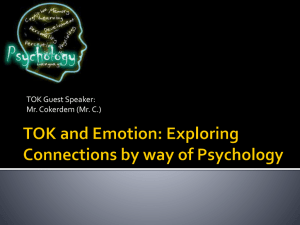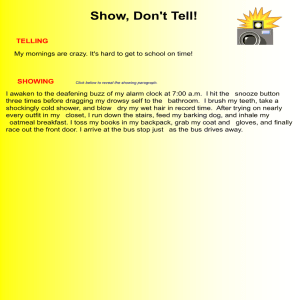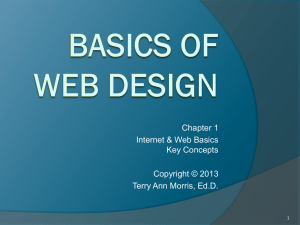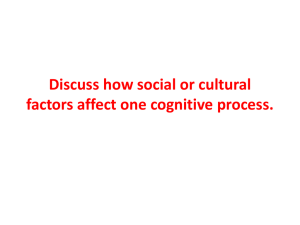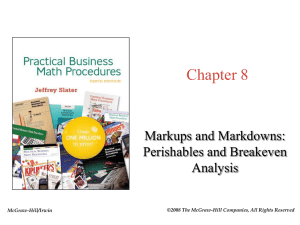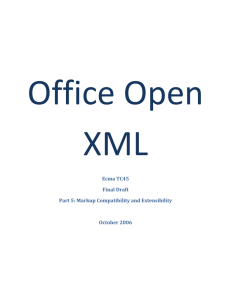EmotionML brief update
advertisement
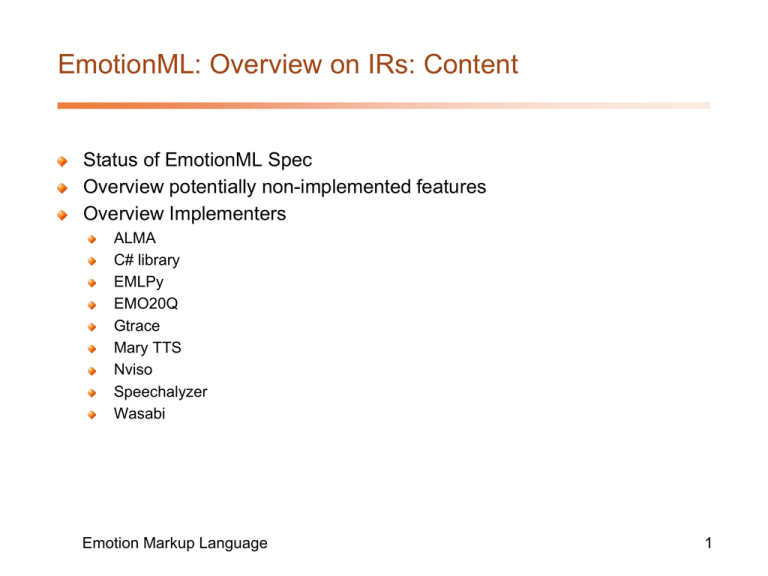
EmotionML: Overview on IRs: Content Status of EmotionML Spec Overview potentially non-implemented features Overview Implementers ALMA C# library EMLPy EMO20Q Gtrace Mary TTS Nviso Speechalyzer Wasabi Emotion Markup Language 1 EmotionML: Overview on Implementation Reports Status: Last call working draft Collecting Implementation Reports and answering public feedback By now 9 IRs were submitted, one is announced (TUMunich) but will come too late (end of year) The core of the spec was implemented, but some elements are in danger (following slide) We’re in the process of waiting for extensions to implement missing features There’s also a common journal publication planned under the lead of Edmon Begoli Emotion Markup Language 2 EmotionML: Features in danger There’s two implementations, that support action-tendency and appraisal-set, but don’t check the names against the vocab, which is required. Implementers promised to deliver till end of month There’s only one implementation so far for the time-stuff taken from EMMA, i.e. start, end, duration, time-ref-uri, offset-to-start. Because we declared these “at risk”, it should be ok to keep them in the spec. There are two implementations that use “media-type” (416), but both don’t check if it’s a valid mime-type, which is an required assertion (417). The implementers are notified and try t implement this, although it’s unclear which mime-type vocab to check Emotion Markup Language 3 EmotionML: IR submitting institutions Telekom Innovation Laboratories Emotion Markup Language 4 EmotionML IR: Alma DFKI http://www.dfki.de/~gebhard/alma/ ALMA: A Layered Model of Affect. is a computational model for the real-time simulation of three basic affect types The ALMA system is an affect producing system. It outputs EmotionML Emotion Markup Language 5 EmotionML IR: C# Library Univ. of Chemnitz https://github.com/gfobe/Emotion ML-Lib-CSharp Master’s thesis at the Univ. of Chemnitz Open source project at Github Used in “Smiley ontology” EmotionML C# library used to describe Emoticons in IRC chat protocol services Emotion Markup Language 6 EmotionML IR: EMLPy Oak Ridge National Laboratory/University of Tennessee https://github.com/ebegoli/EMLPy a Python based library for generation of EmotionML compliant documents. Open source with Github ultimately (and distantly) using EmotionML to help autistic children with alternative representations of emotional content in the material. Emotion Markup Language 7 EmotionML IR: EMO20Q USC-SAIL http://sail.usc.edu/emo20q/ a experimental framework for studying how people describe emotions in language and how computers can simulate this type of verbal behavior. Open source Emotion Markup Language 8 EmotionML IR: Gtrace Queen’s Univ. Belfast http://mary.dfki.de/ Software to trace emotional expression in videos. The system currently implements tracing for category and dimensional descriptors. Emotion Markup Language 9 EmotionML IR: Mary TTS DFKI http://mary.dfki.de/ MARY is an open-source, multilingual Text-to-Speech Synthesis platform that includes modules for expressive speech synthesis. Particularly the support for both categorical and dimensional representations of emotions is important to its expressive speech synthesis system MARY TTS. Emotion Markup Language 10 EmotionML IR: NViso nViso http://nviso.ch nViso 3D Facial Imaging API is an online service for recognition emotions depicted through facial expressions in still images and videos. The focus of this implementation of EmotionML is on using the media type and URI time for video. Emotion Markup Language 11 EmotionML IR: Speechalyzer Deutsche Telekom Laboratories https://github.com/dtagdbu/speechalyzer Analysis / annotation / transcription tool “Speechalyzer” Open Source project in Github Can be used to rapidly judge large number of audio files emotionally. Automatic classification integrated. Uses EmotionML as exchange format. Emotion Markup Language 12 EmotionML IR: Wasabi Univ. of Freiburg https://github.com/CBA2011 WASABI architecture for affect simulation Applied to the articulated communicator Max of the Univ. of Bielefeld To let the WASABI architecture seamlessly interface with other software modules, a standard interface such as EmotionML is indispensable. Emotion Markup Language 13


